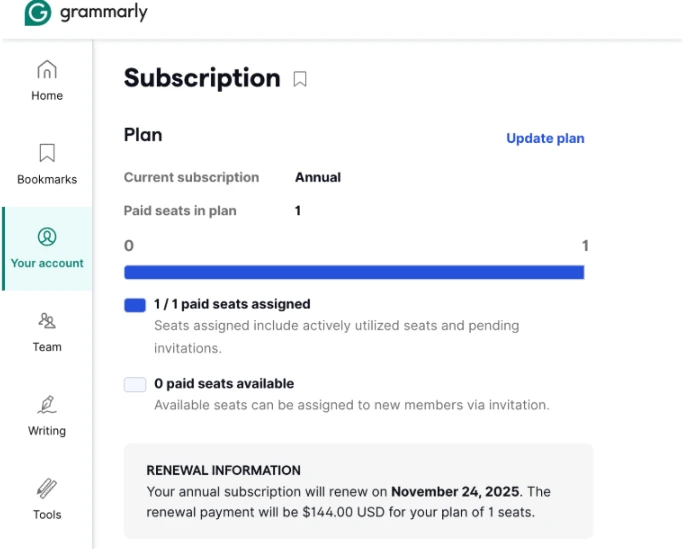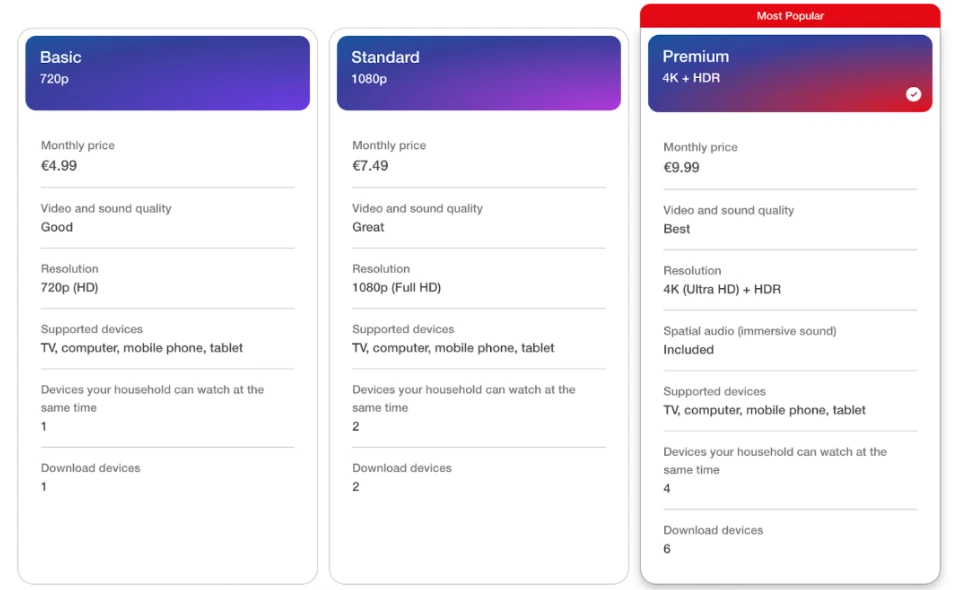Boost your app’s revenue with cutting-edge monetization strategies from Corpsoft Solutions!
Working app monetization strategies for 2025
As the internet evolves, so does the mobile app market. Modern mobile apps become highly diversified and more niche year by year. While gathering only highly engaged audiences can be great, it may raise monetization concerns.
Niches are getting smaller and more concentrated, making monetizing and attracting new customers harder. Meanwhile, despite these challenges, the market is growing. According to research by Sensor Tower, global consumer spending on mobile apps is expected to exceed $613 billion in 2025.
So, what should you do to ride the wave? Check this article to determine what mobile app monetization strategy will suit you in 2025.
5 Most Popular Mobile App Monetization Strategies In 2025
- Freemium monetization strategy
- Subscription monetization strategy
- Emerging ad formats
- Microtransactions
- Partnerships and sponsorships
- Freemium Monetization Strategy
The freemium in-app monetization model is a widely used strategy where you offer basic functionality for free while charging for premium features. You need to ensure that the free plan is still useful enough to attract users, while the premium provides advantages that no one else has. Let’s check the most successful examples of freemium apps:
- Spotify: Free users can listen to music but must endure ads and lack offline downloads. Premium users enjoy ad-free streaming, higher-quality audio, and offline listening.
- Canva: The free version provides access to 100+ templates and basic tools, while the premium plan unlocks exclusive designs, brand kits, and advanced editing.
- Grammarly: The free tier covers basic grammar checks, but the premium version offers advanced suggestions, plagiarism detection, and tone analysis.
- Amazon Prime: While non-members can shop normally, Prime users get faster shipping, exclusive deals, and access to streaming services.
Balance is the key to success here. For instance, if Spotify’s free version had no ads, users would have little incentive to upgrade to Premium. You must offer enough free features to keep users hooked on your app while offering extraordinary paid features worth their money.

Don’t forget to add notifications for paid users, as they should be aware of when their notifications will renew. This transparency will positively affect your reputation. If you don’t notify your paid users about future recurring payments, it undermines your credibility.
Strategies To Increase Freemium Conversions
Free users should have access to functionality that is genuinely useful but still limited compared to the premium experience. Here are a few strategies to drive conversions in the freemium app monetization strategy:
- Enhanced Functionality: Your premium should provide significant benefits to the user. LinkedIn Premium provides tools like InMail, advanced insights, and enhanced job-matching features.
- No Ads: Another common strategy to platforms that provide content, such as YouTube, Hulu, or Spotify.
- Limited-Time Offers: Offer significant discounts within a specific timeframe.
- Trial Periods: Provide free trials of premium features to demonstrate their value.
- Gamified Incentives: Create loyalty or referral programs to reward users.
Grammarly offers users who actively use the app a free 3-day premium every few months with no strings attached. They also promote their service to users who actively use the platform, increasing the chances of future subscriptions.
This is a great tactic because they provide this trial only to active users who are genuinely interested in their platform. If they offer this premium to all users, they won’t get the same return.
How To Evaluate Freemium’s Monetization Success
Evaluate the effectiveness of your freemium strategy and monitor conversions, retention rate, and customer acquisition costs. A well-optimized freemium model typically achieves a 2-5% conversion rate from free to premium users.
Subscriptions
Subscription monetization strategy offers businesses stable, predictable revenue while fostering long-term user relationships. However, the model’s success depends on delivering a high-quality, niche-specific product.
Healthcare Apps
Subscription-based health apps can fund expert consultations, regular updates that help clients better track their health, and algorithm improvements. This model incentivizes users to engage regularly, as payments naturally drive usage.
Subscriptions can unlock telemedicine, as platforms can pay doctors and other specialists for consultations with the money that they receive through subscriptions. Healthcare apps with this monetization model can regularly update medical content, ensuring users have access to the latest research and guidelines.
Educational Apps
Subscriptions create a resource base for continuous app improvement. We previously discussed how premium plans in EdTech help startups enhance their content and marketing strategies. You can create more personalized learning, and provide your premium users unlimited course access or advanced analytics.
Premium users can get more adaptive study algorithms that use the latest AI development. Multi-level plans provide users with options, from basic premium features to full-fledged personalized tutoring.
Entertainment Apps
Games and media apps show their best with subscription-based monetization, offering ad-free access, exclusive content, and AI-based personalization. The most common examples are Hulu, Netflix, Apple Arcade, and most MMOs.

Subscriptions not only secure steady income but also allow businesses to reinvest in user experience, making the model a win-win for creators and consumers. Influencers on Patreon and Buy Me a Coffee can share exclusive content with their followers since paid subscribers can watch content before public release. In gaming apps, subscriptions unlock premium skins, weapons, or challenges.
Emerging Ad Formats
Mobile advertising continues to evolve, offering even more engaging and personalized experiences. Both location-based and interactive ads go beyond traditional methods, providing genuine value to users while increasing ad effectiveness. They enable apps to build stronger connections with their audience, retain users, and drive higher revenue.
These are relatively new formats, so people aren’t bored of them. Implement them in your product monetization to achieve compelling results in 2025.
Location-Based Advertising
During this promotion, you’ll simply display Google’s Local Ads. Local businesses can launch their campaigns on Google’s Local Ads platform. Later Google analyzes their location and interests, promoting these targeted ads of local businesses in your app.
Location-based promotion creates a seamless and less intrusive experience. It drives immediate action, like purchases or visits to the advertiser’s platform. You, as the publisher, also get your share of revenue for successful promo.
Interactive Advertising
We know that you’ll see ads where you can actually play mini-games before downloading then. These advertisements are called interactive ads. They actively involve users through elements like mini-games, quizzes, or product trials, transforming the traditional passive ad experience. It potentially can enhance user engagement and build positive brand associations for the advertiser and you as a publisher.
One of the most well-known examples of interactive ads is the famous Royal Match interactive promo. Users often see their advertisements in freemium apps.
Mobile Ads – Royal Match
Another type of interactive advertising is virtual product testing with AR (Augmented Reality), or polls/surveys that collect user feedback. You may often see those “surveys” on YouTube, where the platform asks users different questions.
Microtransactions
Microtransactions have become another common in-app monetization method. While this model is particularly popular in games, it’s increasingly being adopted by other types of apps, such as educational or productivity tools, where users can buy extra “lives” or features to enhance their experience without disrupting their progress.
Make sure that those transactions help you to provide a personalized experience. Users should feel that in-app purchases are relevant to their needs.
- Behavioral Analytics: Use algorithms to analyze user behavior to offer them micro-purchases that align with their preferences.
- Bundled Offers: Create bundles that offer more value than single-item purchases.
- NFT Integration: Allow users to buy, sell, or collect NFTs as part of their experience within the app. They can earn NFT on your app and exchange them with other users inside the app or on third-party platforms.
However, it’s crucial not to turn the app into a “pay-to-win” experience, which can turn users away. It’s already happened with most EA games since they are known for their backlash for excessive microtransactions.

Source: Reddit
Meanwhile, Fortnite is a successful example of both microtransactions and partnerships. They earn money by offering users exclusive paid skins, and accessories to players. Meanwhile, they offer other businesses to create skins and accessories with their brand identity, unlocking partnership monetization.
Partnerships and Sponsorships in App Monetization
These are not so common, yet effective ways of cross-audience monetization, where multiple businesses can exchange their audience and earn money along the way. You can simply collaborate with other brands or provide a personalized experience for each user, tailoring advertisements and product offerings to individual preferences.
Consumers are drawn to brands that support environmental initiatives or social impact projects. In 2025, you can collaborate with businesses focused on sustainability to create campaigns that combine business goals with positive societal impact.
You can create Metaverse or Fortnite events. Another fancy partnership and potential monetization model is to build collaboration with other brands, such as by modifying your mascots. You can even create special avatars in games that are popular among your potential audience. Collaborate with other brands to create exclusive offerings within your app to drive user engagement.
Try some local partnerships to provide users with personalized, location-based offers. Travel apps, for example, may collaborate with local restaurants or tour guides to offer personalized suggestions that enrich users’ experiences. You can even try e-commerce partnerships as one of your ad monetization approaches. For instance, a fitness app might collaborate with equipment brands to offer users discounts on gear.
Trends in Mobile App Monetization
Modern tech advancements constantly shift user behaviors, changing the app monetization models. Let’s check 3 main trends that will disrupt app monetization models in 2025:
- Artificial Intelligence (AI) taking the lead: We will see even more personalized experiences due to AI predictions. AI tools can also unlock precise targeting for advertisers by understanding audience preferences and delivering advertisements that resonate more deeply, increasing ROI.
- Cryptocurrency and NFTs: Although NFTs’ peak was surpassed in 2023, their legacy persists, particularly in mobile app ecosystems. You may implement your NFTs so that users can exchange the tokens they earn in your app for cryptocurrencies like Ethereum or Bitcoin. This indirect app data monetization will become even more popular in 2025.
- Augmented Reality (AR) consolidation: We have already seen how e-commerce businesses use AR to show their clients how the product may look in real-life conditions. IKEA and Notino (European beauty products retailer) are already using this practice. This practice will become even more common in 2025.
Axie Infinity is a pioneer in integrating blockchain technology with gaming. The game uses non-fungible tokens (NFTs) to represent in-game assets, such as characters or items.
Wrapping Up: Adapt Your Monetization Strategy to Future Trends
The first step to success is to analyze the market, potential audience, and future app itself. Think in advance about your app data monetization and potential app business model.
We’ve previously discussed the average app development routine, so today, we will have only a quick look around at the most crucial KPIs that you should monitor in tracking and monetization tools:
- ARPU (Average Revenue Per User): With this metric, you’ll find how much revenue the average user can generate to you. Poor ARPU shows low, consider adding more in-app purchase options or improving subscription models.
- LTV (Lifetime Value): LTV represents the total revenue a user will generate during their time using your app. The higher the LTV, the more sustainable your user acquisition.
- Retention Rate: This measures how many users continue to engage with your app over time. A high retention rate indicates that users find value in your app and are more likely to make in-app purchases.
- Retention Rate: Percentage of users returning to your app after a certain period. High retention correlates with increased monetization opportunities.
Regularly conduct market analysis and test your app to gather detailed feedback both from professional testers and users. Study reviews to become better and eliminate potential friction points. All these actions help you understand pain points and what users appreciate most.
We at Corpsoft Solutions are admirers of an agile approach that can be easily adapted to meet businesses’ everchanging needs. We understand the importance of professional assistance, and that’s why we are here to help you in your development, promotion, and monetization. Book your first free consultation today to become successful in 2025!
FAQ
- What is an ads monetization?
Ads monetization is earning revenue by displaying advertisements within digital platforms like websites, apps, or videos. Advertisers pay based on clicks, views, or user actions, while platforms offer free or affordable content. The most common ad formats are banners and videos.
- What are the most common app monetization models?
The most common app monetization models are:
- In-App Purchases: Users buy virtual goods or premium features.
- Subscription: Users pay a recurring fee for access to content or services.
- Ads: Revenue generated through in-app advertisements.
- Freemium: The basic app is free, but users pay for premium features.
- Paid Apps: Users pay upfront to download the app.
- What monetization models will be popular in 2025?
We will see hybrid monetization models, where apps mix multiple approaches to maximize financial returns. AI-driven personalizations will tailor user experience even more, while blockchain integration will unlock the new world of Web3 to general users.
Subscribe to our blog